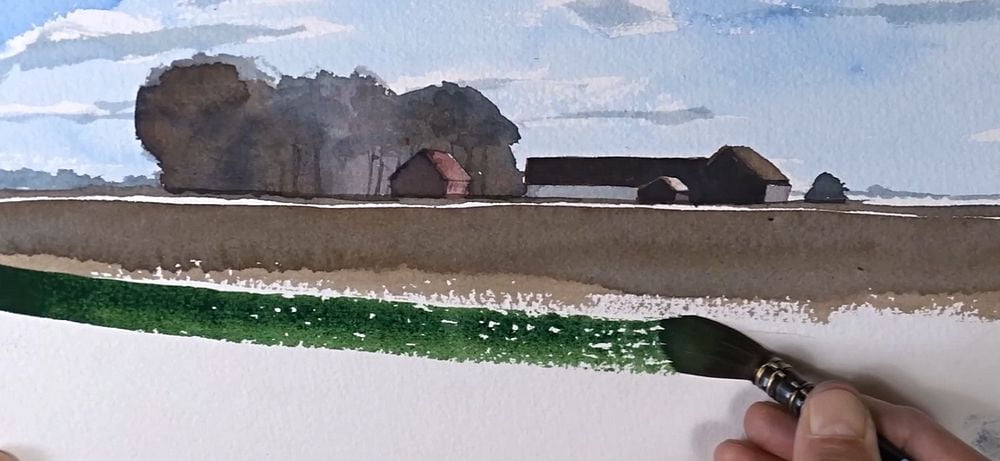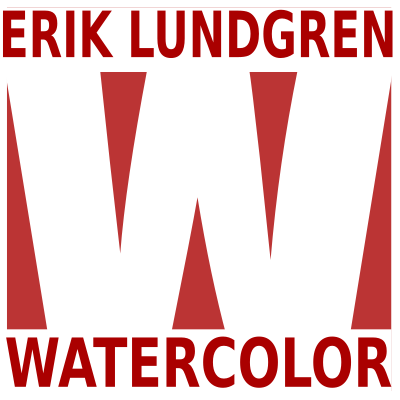Dry brush

Using Dry brush technique involves putting paint on the paper in such a way that the surface is only partially covered. I think the word Dry brush is misleading, it is possible to use “Dry brush” with a wet brush. It will be a different type of pattern than with a dry brush, not worse just different.
In Swedish we use a word that we have borrowed from German: “Schumring”. It describes the effect achieved, not the approach. The word roughly means “tremble” or “vibrate”. I guess it’s the same word as “Scumbling” as the technique, or anyway, similar technique is sometimes called in English. In this text I will call the technique “Scumbling” instead of “dry brush” which I think can be misleading,
Scumbling is used to create structure in the painting, it can be for the bark of the tree, sun glitter on the lake or just to look nice, You have to practice for the technique to work. A watercolor paper with rough surface is preferable, a smoother paper is difficult to get any effect on.
With a dry brush
Start with a dry brush, it’s easier, dip the brush in the premixed paint (light or dark, a lot or less water does not matter for the technique), remove as much of the paint as possible on the edge of the mixing cup, the brush should be damp, but not completely dry. Paint with the side of the brush, do not use the fine tip, place the brush so that only the side of the straws is in contact with the paper.
At the first contact with the paper, the brush gives off more paint, as you continue the brush loses paint to the paper and you get drier, more spotty results. It’s easier with a simple synthetic brush than with a nice sable brush. A synthetic brush holds significantly less liquid than a sable brush, which is an advantage in this case. In addition, the technique wears on the brush, better to wear on a cheap brush than an expensive one.
With a wet brush
Dip the brush in paint, it should be really wet. Make a quick and determined brushstroke with the brush lying against the paper, there can be no hesitation here, it must be quick and immediate.
The dotted surface occurs at the bottom of the brush, you get no or little effect at the tip. Of course, it is not possible to control the result in detail, be happy with what you get, trying to change the result is doomed to fail.
Practice a lot
Ten thousand hours, you are familiar with the expression. In short, it describes that in order to be good at something, you have to spend a lot of time on this. To achieve a comfortable attitude when it comes to Scumbling, it is important to practice, practice and practice.
I do not mean to sit with a piece of paper and just try. You have to use the technique in paintings. In almost every painting you do, there is certainly room for a little Scumbling, try it! If it doesn’t work, be happy anyway and try again in the next painting, This way you build self-confidence, after a few hundred attempts it will work much better.
There are no shortcuts, to be good at something you have to do it a lot. You can not learn to paint on a course, or by reading books or this blog. You have to paint to be good at painting.


















